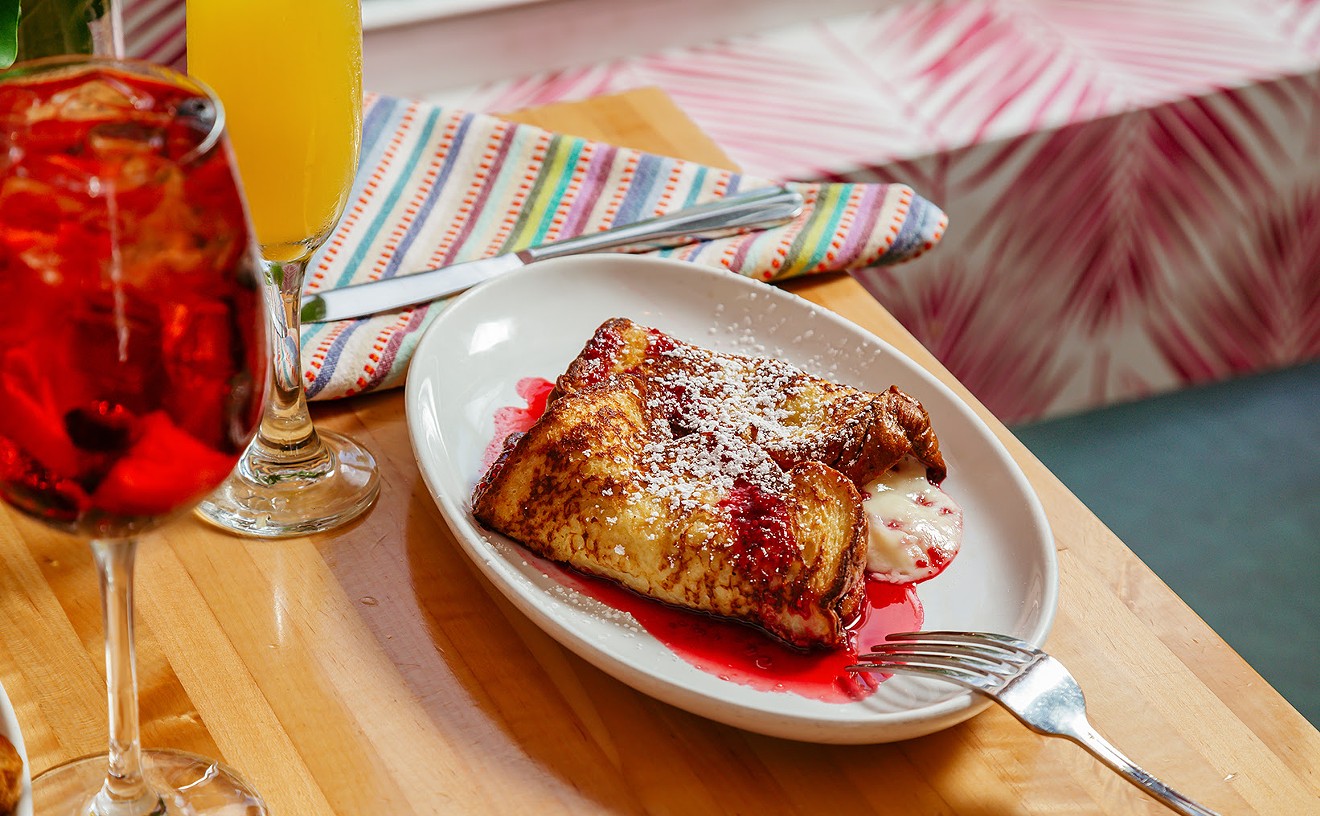It's an annual Thanksgiving frenzy. It's an exhaustive search for the final answer to a seemingly simple question: What's the most reliable, most intelligent way to roast a whole bird?
So, Short Order sought the advice of three Miami toques: Andrew Carmellini of the Dutch, Danny Serfer of Blue Collar, and Paula DaSilva of 1500 Degrees. Our mission was simple. We didn't want to master a fabulous sous vide or break any basting barriers or stomp on stuffing's dreams. We just wanted a good turkey. And here's how to make it.
Begin with a good bird: Carmellini recommends a heritage turkey. They have better flavor, but they will also be slightly tougher than other varieties. DaSilva's preference is a free-range bird, but another option is to look for an organic or hormone-free turkey.
Estimate the right amount of turkey per person: This is simple. Estimate about one pound of turkey per person, so a 12-to-14-pound bird will feed about 12 people. But if you're already dreaming of turkey sandwiches, it's best to calculate about a pound and a half per person.
Large birds are tough to cook (let alone carry to and from the oven). If you're dealing with a big crowd, opt for two small turkeys instead of one 18-pounder.
Brine or no brine?: Carmellini is a firm believer in brining. "I am pro-brine! It's the only way to go. It will always make a juicer bird. It's science," he says. DaSilva agrees: "I like to brine our turkeys simply because it helps in layering and forcing more flavor into the meat before roasting."
But Serfer has a different opinion: "I find that when you brine the turkey, it doesn't brown as nicely and you lose a bit of the sear on the skin."
Let's leave this up to time. If you can plan ahead, make a brine composed of one gallon of cold water and about one cup of kosher salt (for a 12-to-14-pound turkey). Add brown sugar, peppercorns, citrus zest, herbs, and spices (fennel, coriander, juniper berries, etc) if you'd like. If the turkey isn't completing submerged, add more water in the same proportion to salt. Soak for up to 24 hours. Then remove from the brine. Rinse and pat dry with paper towels.
Butter (or bacon) up the bird: Serfer rubs room-temperature unsalted butter on the bird. He recommends a whole pound of churned cream, but you could get away with as little as half a stick. Just make sure the turkey is coated evenly.
If you're feeling more extravagant and don't feel like roasting the bird whole, try one of Carmellini's suggestions: He separates the breast and roasts the sections wrapped in bacon. Then he braises or confits the legs. The back and neck are reserved for sauce.
Season: If you brined your turkey, season very lightly with salt and pepper. If you didn't brine the turkey, do as Serfer says: "Season with a lot more salt and pepper than you would ever need." Estimate two tablespoons of kosher salt and about one teaspoon of freshly ground black pepper. Don't forget to season the cavity.
Forget the internal stuffing: "It's just not worth the effort for the little amount of stuffing that you get," Serfer says. The amount of stuffing is rarely sufficient to feed a lot of people. And, most important, preparing the stuffing inside the cavity results in uneven cooking. That's because stuffing has to reach about 160 degrees before it can be safely consumed. By that time, you'll have a dried-out turkey.
So Serfer recommends making the stuffing separately. It's genius. It's called dressing.
Add aromatics to the cavity: Feel free to add carrots, onion, celery, and herbs inside the bird's cavity. Serfer adds a whole head of garlic and thyme. But don't overdo it or the bird will cook unevenly. It should be only lightly stuffed (with aromatics, no stuffing!).
Double-check the oven's temperature and set a timer: Roasting a turkey takes a few hours, so it's important to keep things progressing smoothly. "Keep the oven temperature as consistent as possible," Serfer says. If necessary, buy a thermometer to double-check the oven's temperature before you put the turkey in. Set a timer so you don't lose track of the cooking time.
Roast: Once your timer is in place, set the bird on a heavy roasting pan, atop a roasting rack, breast side up. Place into a 500-degree oven. Roast for about 35 minutes or until the breasts are nicely browned. Then lower the temperature to 350 degrees and cover the breasts with aluminum foil.
When roasting, don't baste: "If you make a great gravy and don't overcook the turkey, there's no need for the whole baster thing," Carmellini explains. Basting also involves opening and closing the oven door. Doing so lets the heat out of the oven, which means a longer cooking time for the turkey. That means a dry bird.
Cook only until 150 degrees: Roast until the breasts reach an internal temperature of 150 degrees. Estimate about 15 minutes per pound -- about three hours. Says Carmellini: "Remember, the turkey will continue to cook well after you take it out of the oven. So 150 to 155 degrees is a good temperature to take it out."
Let the bird chill: Once the turkey is out of the oven, allow it to rest. "Just let it sit in there and don't mess with it," Serfer says. Otherwise, all the turkey's juices will run out as you carve. Serfer recommends 40 minutes of resting time. And, on that note...
Carve smart: When the turkey is ready, first carve out the entire breasts. Then carve them on a chopping board. This makes it so much easier. And remember to always cut across the grain. Continue with the rest of the turkey.
Follow Emily on Twitter @EmilyCodik.
Follow Short Order on Facebook , on Twitter @Short_Order, and Instagram @ShortOrder.









